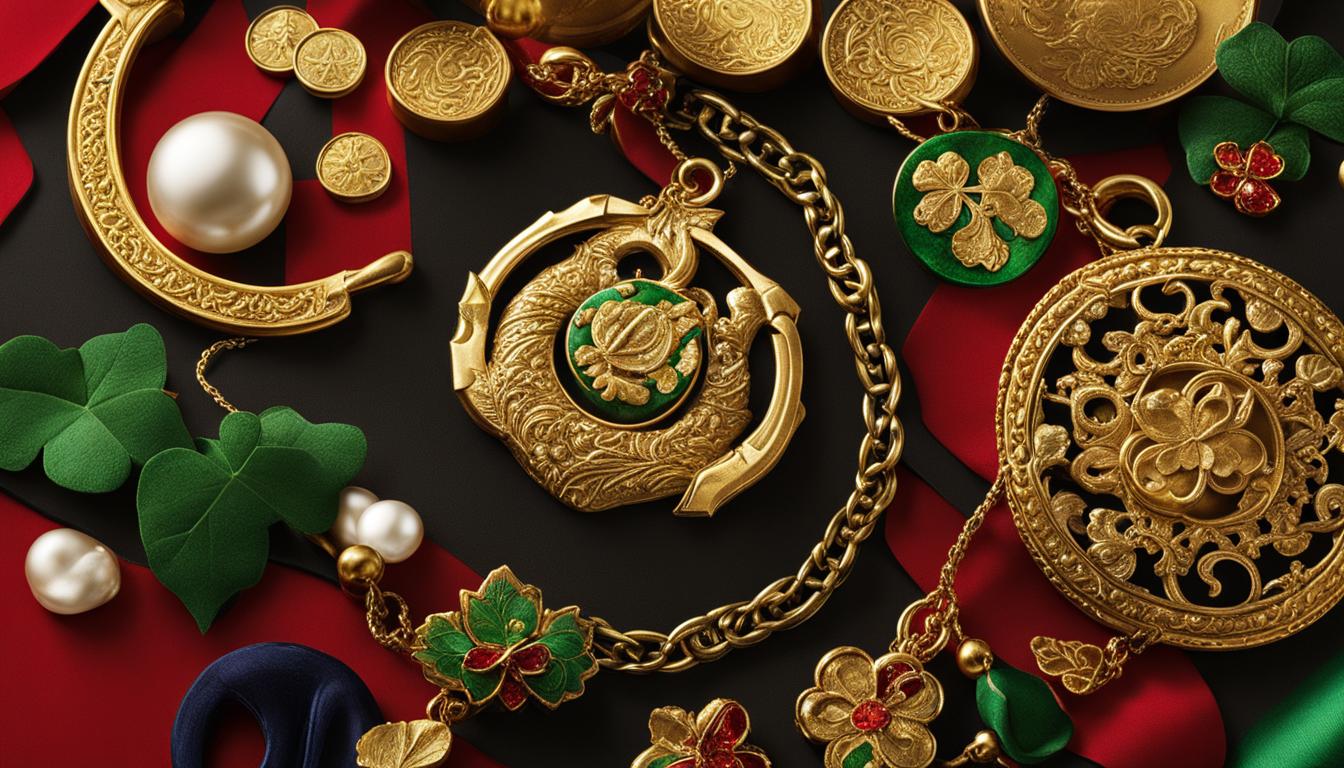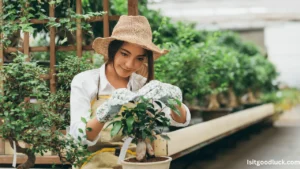Welcome to the exciting world of New Year’s Eve traditions and superstitions! As the clock strikes midnight on December 31st, we all hope for a fresh start filled with good luck and prosperity. If you’re looking to attract positive energy and ensure a fortunate year ahead, we’ve got you covered. In this article, we’ll explore the fascinating customs and practices that people follow around the world to usher in good fortune at the stroke of midnight.
From eating specific foods believed to bring wealth, love, and abundance to performing symbolic acts to ward off evil spirits, each tradition has its own significance and charm. You’ll discover the history and symbolism behind these age-old rituals, and even learn some phrases and affirmations that can help attract good luck at the turn of the year.
So, whether you’re curious about the significance of round foods and noise makers or want to explore unique New Year’s superstitions from different cultures, this article has something for everyone. Get ready to welcome the new year with positivity, hope, and a touch of magic as we unravel the secrets to bringing good luck at 12 AM New Year.
Contents
- 1 The History and Symbolism of New Year’s Luck Traditions
- 2 New Year’s Traditions Around the World
- 3 Superstitions and Folklore for New Year’s Luck
- 4 The Significance of Round Foods and Noise Makers
- 5 Unique New Year’s Superstitions and Customs
- 6 Conclusion
- 7 FAQ
- 7.1 Why do people believe eating greens brings good financial luck?
- 7.2 What is the significance of the New Year’s Eve kiss?
- 7.3 Why do people open windows and doors at midnight on New Year’s Eve?
- 7.4 How does burning a bayberry candle bring good luck?
- 7.5 Why do people wear red underwear on New Year’s Eve?
- 7.6 What is the significance of cleaning the house on New Year’s Eve?
- 7.7 Why do people eat herring at the stroke of midnight?
- 7.8 What is the symbolism behind eating black-eyed peas and collard greens on New Year’s Day?
- 7.9 Why do people make loud noises on New Year’s Eve?
- 7.10 What is the tradition of eating grapes at midnight in Spain?
- 7.11 How does waking up early on New Year’s Day bring luck?
- 7.12 Why do people put cash in their wallets on New Year’s Eve?
- 7.13 What is the belief behind carrying an empty suitcase on New Year’s Eve?
- 8 Source Links
Key Takeaways:
- Discover the traditions and superstitions that people follow around the world to attract good luck on New Year’s Eve.
- Explore the history and symbolism behind popular customs like eating specific foods, making loud noises, and wearing lucky colors.
- Learn phrases and affirmations that can bring positive energy and attract good fortune at the stroke of midnight.
- Understand the importance of setting goals and resolutions to manifest desired outcomes in the new year.
- Embrace the diversity of New Year’s traditions and find inspiration to incorporate them into your own celebrations.
The History and Symbolism of New Year’s Luck Traditions
Many New Year’s traditions are based on folklore and superstitions. These traditions are believed to bring luck and fortune into the new year. Eating specific foods, such as greens, peas, and herring, symbolize prosperity and good fortune. The tradition of kissing at midnight is believed to bring love and affection. Opening doors and windows is a symbolic gesture of welcoming the new year and letting go of the old. Burning a bayberry candle is said to attract luck and prosperity. Wearing red underwear and cleaning the house are believed to bring love and positive energy. Making loud noises and eating grapes are traditions to ward off evil spirits and invoke good luck. Waking up early, putting cash in your wallet, and carrying an empty suitcase symbolize travel and financial prosperity.
These New Year’s traditions have deep historical roots and are observed with the hope of bringing luck and positive energy into the new year. Each tradition carries its own symbolism and significance, reflecting cultural beliefs and practices. By partaking in these customs, individuals seek to attract good fortune, love, prosperity, and travel opportunities. Whether it’s through the act of eating specific foods, wearing certain colors, or performing symbolic gestures, these traditions connect people to their cultural heritage and create a sense of unity and hope for a prosperous new year.
To provide a visual representation of the symbolism and significance of New Year’s luck traditions, the table below highlights some common customs, their associated meanings, and the desired outcomes they aim to bring:
| Tradition | Symbolism | Desired Outcome |
|---|---|---|
| Eating greens, peas, and herring | Prosperity and good fortune | Financial success |
| Kissing at midnight | Love and affection | Strong relationships |
| Opening doors and windows | Welcoming the new year, letting go of the old | Fresh beginnings |
| Burning a bayberry candle | Luck and prosperity | Wealth and abundance |
| Wearing red underwear and cleaning the house | Love, positive energy | New relationships, clean slate |
| Making loud noises and eating grapes | Warding off evil spirits, invoking good luck | Protection, prosperity |
| Waking up early, putting cash in your wallet, and carrying an empty suitcase | Travel, financial prosperity | New adventures, wealth |
These traditions may vary across cultures, but their underlying theme remains the same: to attract luck and fortune in the new year. Whether you follow one or many of these customs, the intention behind them is to start the year with positivity, hope, and a belief in the power of symbolism.
New Year’s Traditions Around the World
As the clock strikes midnight on New Year’s Eve, people around the world partake in various traditions and customs to attract good fortune and positive energy for the coming year. These traditions vary across different countries and cultures, each with its own unique practices and beliefs. Let’s explore some of the fascinating New Year’s traditions celebrated globally:
In Latin America
Latin American countries have their own set of rituals to ensure a prosperous new year. For example, in Mexico and some other countries, it is customary to carry an empty suitcase around the block to attract travel opportunities and new adventures in the coming year. Another tradition involves eating twelve grapes at midnight, with each grape representing good luck for each month of the year.
In Spain
Spain has a long-standing tradition of eating twelve grapes at the stroke of midnight. It is believed that this practice guarantees twelve months of good luck and prosperity. Spaniards gather with friends and family, eagerly devouring one grape with each chime of the clock, accompanied by cheers and laughter.
In Germany
In Germany, people embrace the custom of incorporating lucky charms into their New Year’s celebrations. Pigs are seen as symbols of good luck and abundance, so it is common to gift pig-shaped candies or figurines to loved ones. Additionally, mushrooms are believed to bring fortune, so mushroom-shaped ornaments are often hung on trees or used as decorations.
| Country | Tradition |
|---|---|
| Latin America | Carrying an empty suitcase and eating twelve grapes at midnight |
| Spain | Eating twelve grapes at the stroke of midnight |
| Germany | Using lucky charms like pig-shaped candies and mushroom ornaments |
These are just a few examples of the diverse New Year’s traditions celebrated worldwide. Each tradition carries its own significance and represents the hopes and wishes of the people. Regardless of where you are, embracing these customs can add an extra touch of luck and positivity to your New Year’s celebrations.
Superstitions and Folklore for New Year’s Luck
Superstitions and folklore play a significant role in New Year’s traditions. These customs are believed to bring good luck and invite prosperity into the new year. From specific foods to symbolic actions, people around the world embrace these traditions with the hope of a fortunate and prosperous year ahead.
One popular superstition is the belief that eating certain foods on New Year’s Eve or New Year’s Day can bring wealth and good fortune. For example, in the Southern United States, it is customary to eat black-eyed peas and collard greens. Black-eyed peas symbolize coins, while collard greens represent paper money. By consuming these foods, it is believed that financial prosperity will follow.
Another common superstition is the practice of lighting a bayberry candle before midnight and allowing it to burn out completely. This tradition is said to attract luck and prosperity for the coming year. Additionally, wearing red underwear on New Year’s Eve is believed to bring love and new relationships.
“These customs and superstitions have been passed down through generations and continue to be practiced with the hope of a fortunate and prosperous new year.”
Making loud noises is also a prevalent tradition to ward off evil spirits and invite good luck. This can be done through fireworks, banging pots and pans, or setting off firecrackers. The noise is thought to scare away any negative energy and create a fresh, positive start to the new year.
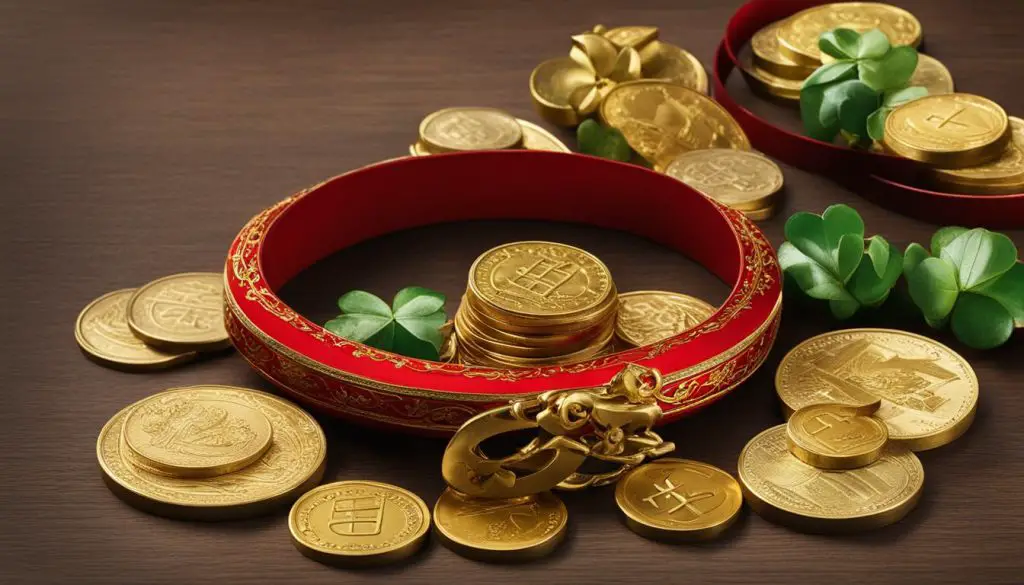
These superstitions may vary from culture to culture, but the underlying belief in attracting good fortune at 12 am on New Year’s remains constant. By embracing these customs and superstitions, individuals hope to set a positive tone for the year ahead and invite luck and prosperity into their lives.
The Significance of Round Foods and Noise Makers
As the clock strikes midnight on New Year’s Eve, people around the world engage in various traditions and customs to invite good luck and positive energy for the coming year. One common belief is that consuming round foods at midnight brings prosperity and abundance. Round foods like lentils, black-eyed peas, and grapes symbolize coins and wealth, making them a popular choice for New Year’s Eve meals. By partaking in these round foods, you are symbolically attracting financial fortune and success.
Another tradition involves the use of noise makers, such as fireworks, firecrackers, and bang pots and pans. The loud noises are believed to scare away evil spirits and negative energies, clearing the path for good luck to enter. By making a ruckus and filling the air with sound, you are creating an atmosphere of celebration and warding off any potential harm or misfortune.
To provide a visual representation of the significance of round foods and noise makers, here is a table summarizing their symbolism:
| Tradition | Symbolism |
|---|---|
| Round Foods | Prosperity and abundance |
| Noise Makers | Warding off evil spirits and negativity |
Embracing these traditions and incorporating round foods and noise makers into your New Year’s Eve celebration can create a festive and meaningful atmosphere, filled with hope and positive vibes. So go ahead, enjoy a plate of lentils or black-eyed peas, make some noise, and welcome the new year with open arms and a dash of good luck.
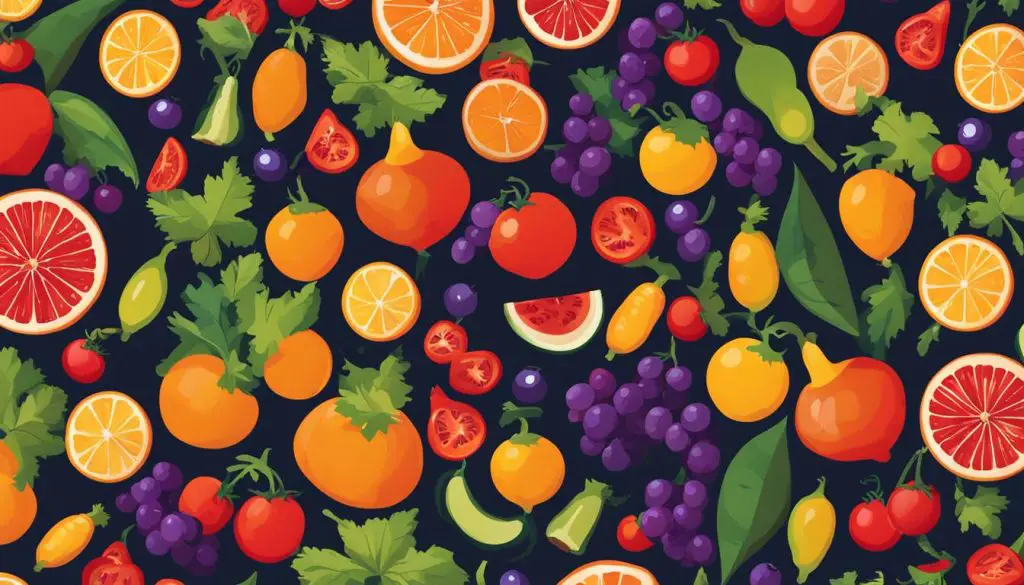
Source:
“Traditions and Superstitions for New Year’s Eve.” The Old Farmer’s Almanac. Accessed December 20, 2021. https://www.almanac.com/content/new-years-traditions.
Unique New Year’s Superstitions and Customs
As you ring in the New Year, consider incorporating some unique superstitions and customs to bring luck and good fortune into your life. From wearing specific clothing to performing symbolic rituals, these traditions are believed to attract positive energy and set the stage for a prosperous year ahead.
Belgium’s Animal Blessings
One fascinating custom in Belgium is the tradition of farmers wishing a “Happy New Year” to their cows, horses, and other farm animals. This ritual is believed to bring prosperity and successful farming in the coming year. It is a unique way to honor and express gratitude to the animals that contribute to their livelihoods.
The Philippines’ Round Fruits and Polka Dots
In the Philippines, it is believed that wearing polka dot clothing and eating 12 round fruits at midnight will bring good fortune for each month of the year. The round shape symbolizes coins and prosperity, while the polka dots represent abundance. This tradition is a colorful and joyful way to invite luck and abundance into the new year.
“Embrace these unique traditions and customs to infuse your New Year’s celebrations with positive energy and hopeful intentions.”
Brazil’s White Clothing
Brazilians believe that wearing white clothing on New Year’s Eve brings peace and good luck. It is a common sight to see people dressed in white as they gather on the beaches of Brazil, welcoming the new year with fireworks and celebrations. This custom is a symbol of purity and renewal, setting the stage for a fresh start.
| Custom | Country |
|---|---|
| Animal blessings | Belgium |
| Round fruits and polka dots | The Philippines |
| White clothing | Brazil |
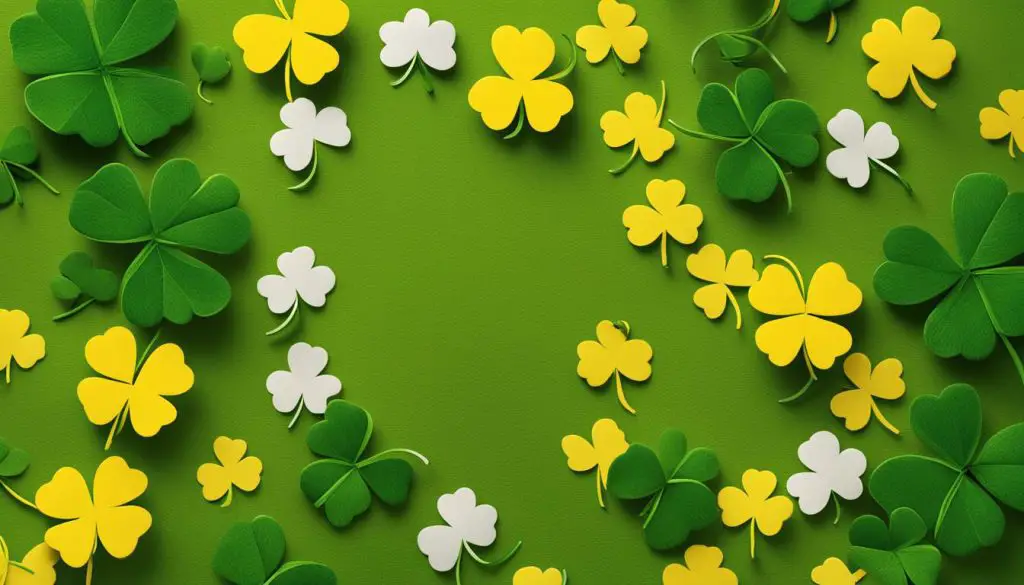
Table: Tips for Setting New Year’s Resolutions
| Tip | Description |
|---|---|
| 1 | Set realistic and achievable goals |
| 2 | Focus on the positive and what you want to achieve |
| 3 | Break down your resolutions into smaller steps |
| 4 | Visualize your goals and repeat positive affirmations |
| 5 | Create a support system and join groups with similar goals |
| 6 | Celebrate each milestone and stay motivated |
Conclusion
New Year’s traditions and superstitions have long been practiced to bring good fortune and positive energy into the new year. Whether it’s eating specific foods, following unique customs, or setting positive goals, these traditions are deeply rooted in cultural beliefs and serve as a way to attract luck and success.
As the clock strikes 12 am on New Year’s Eve, embrace the opportunity to usher in good fortune. Remember to make positive affirmations and set intentions for the year ahead. By incorporating these traditions and focusing on attracting good luck, you can start the new year with a sense of optimism and possibility.
Whether you choose to eat grapes for luck, make noise to ward off evil spirits, or carry an empty suitcase for travel opportunities, these traditions hold significance and can add a touch of magic to your New Year’s celebrations. So, as you bid farewell to the old and welcome the new, may you find joy, abundance, and good fortune at 12 am on New Year’s!
FAQ
Why do people believe eating greens brings good financial luck?
Eating greens is believed to bring good financial luck because they resemble money.
What is the significance of the New Year’s Eve kiss?
The New Year’s Eve kiss is believed to bring love and affection for the year ahead.
Why do people open windows and doors at midnight on New Year’s Eve?
Opening windows and doors at midnight is said to symbolically usher out the old year and welcome in the new.
How does burning a bayberry candle bring good luck?
Burning a bayberry candle is believed to bring good luck and prosperity.
Why do people wear red underwear on New Year’s Eve?
Wearing red underwear is believed to bring love and new relationships.
What is the significance of cleaning the house on New Year’s Eve?
Cleaning the house is said to remove negativity and invite positive energy for the new year.
Why do people eat herring at the stroke of midnight?
Eating herring at midnight is believed to bring good luck.
What is the symbolism behind eating black-eyed peas and collard greens on New Year’s Day?
Eating black-eyed peas and collard greens on New Year’s Day is believed to bring wealth and fortune.
Why do people make loud noises on New Year’s Eve?
Making loud noises is believed to ward off evil spirits and bring good luck.
What is the tradition of eating grapes at midnight in Spain?
Eating grapes at midnight is a tradition in Spain to bring good luck.
How does waking up early on New Year’s Day bring luck?
Waking up early on New Year’s Day is believed to make it easier to wake up early throughout the year.
Why do people put cash in their wallets on New Year’s Eve?
Putting cash in your wallet is believed to bring luck when it comes to wealth.
What is the belief behind carrying an empty suitcase on New Year’s Eve?
Carrying an empty suitcase is believed to bring more travel opportunities in the new year.

